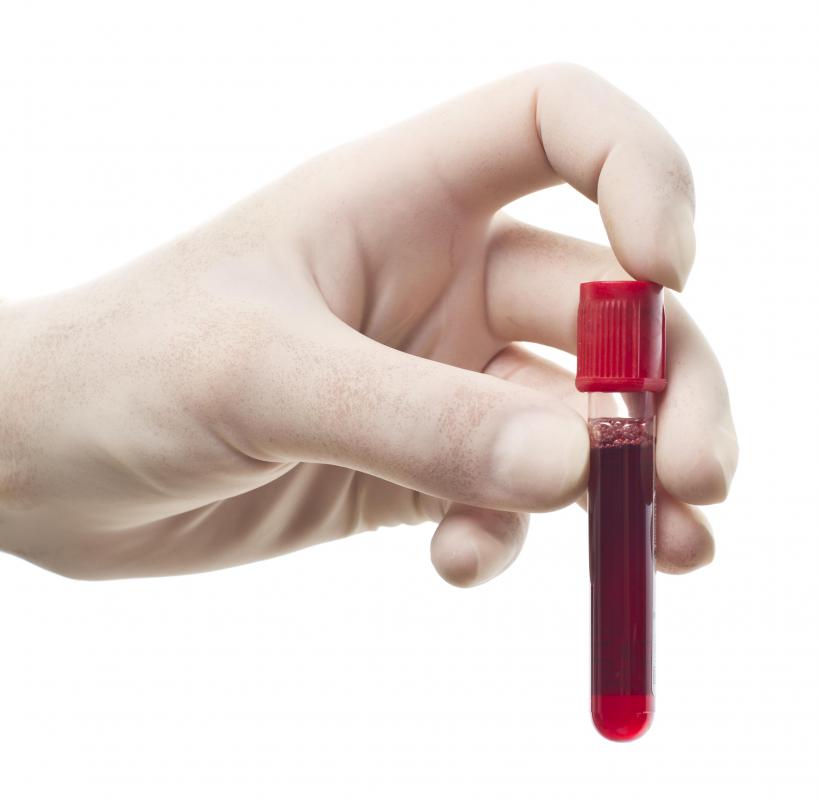At TheHealthBoard, we're committed to delivering accurate, trustworthy information. Our expert-authored content is rigorously fact-checked and sourced from credible authorities. Discover how we uphold the highest standards in providing you with reliable knowledge.
What Is a Panel Reactive Antibody?
The body naturally produces many different antibodies that help protect against invasion by foreign antigens. Antibodies can also be created by the body to attack tissue, particularly the tissue of another human. In these instances, an antibody called a panel reactive antibody (PRA) is created when foreign tissue is introduced. Blood transfusions, transplants, and pregnancy can trigger production of PRAs. These antibodies target human leukocyte antigens (HLA) that are found in human tissue.
A panel reactive antibody test is a blood test that specifically looks for PRAs. This test measures the levels of PRAs that are in the blood. PRA levels are particularly important to monitor in patients who are waiting for kidney transplants. If these antibody levels are high, matching a recipient with a donor organ can be difficult. Higher patient PRA levels raise the chances that the body will reject an organ that comes from a donor with normal to low PRA levels.

Although pregnancy, previous transplants, and blood transfusions are common causes for increased panel reactive antibody levels, these occurrences do not always result in a PRA increase. Studies have shown that patients receiving certain medications, such as erythropoietin, had a decrease in the amount of blood transfusions that were needed and a reduction in PRA levels. Additionally, previous transplants generally cause an increase in PRA levels if the patient's body is trying to reject the transplant.

Monitoring PRA levels is important with kidney transplant candidates. High PRA levels mean that doctors have more difficulty locating a matching donor, which can present a problem if an immediate transplant is necessary. This means that patients with a higher PRA count may have to wait much longer for a matching donor kidney. Patients with elevated PRA levels are also more likely to experience organ rejection and must be given a more advanced regimen of anti-rejection medications.

Panel reactive antibody levels are based on percent measurements. The percentages of PRAs in the blood play a role in determining the odds of finding a matching donor. If a patient has a higher PRA level, at 60 percent for example, 60 out of 100 donors will not match.
There are two techniques that have been found to be successful in reducing PRA counts. Immunoadsorption and plasmapheresis are both PRA removal techniques. These two methods deal with removing the antibodies from the blood, but in two different ways.

Immunoadsorption involves circulating the patient's blood through a special machine. This machine is specifically designed to bind PRAs. The PRA sticks to a column in the machine, which removes the antibodies from the blood. The clean blood is then recirculated into the patient's body.
Plasmapheresis is similar to hemodialysis. The patient is hooked to a machine called a centrifuge. Red and white blood cells and platelets are separated from plasma by the machine. Separated plasma, which contains the panel reactive antibody concentration, is discarded. New, clean plasma is replaced and joined with the platelets and blood cells. The centrifuge then adds the new mixed blood back to the patient.
AS FEATURED ON:
AS FEATURED ON:

















Discuss this Article
Post your comments